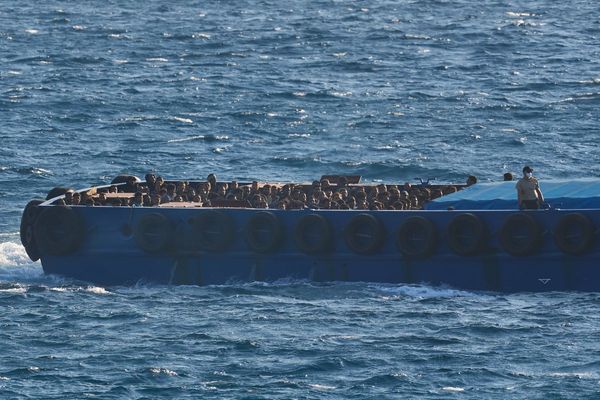
Volkswagen killed the VR-6 in Europe in the mid-2010s, but the V-6/inline-six mashup of an engine continued in North America until a couple of years ago. The last car sold in the US with the narrow-angle V-6 was the 2023 Atlas. Unless you're living in China, this might come as a surprise—VW still offered the unusual powertrain in cars such as the Talagon and the gas-powered Audi Q6.
But not anymore. The VR-6 is officially dead.
VW spokesperson Andreas G. Schleith shared the sad news on LinkedIn. The last VR-6 engine was assembled on December 12, 2024. The engine had been in production for nearly 34 years, premiering at the 1991 Geneva Motor Show in the third-generation Golf. Since then, almost 1.87 million engines have been assembled. The VR-6 went on to power many VW products: Corrado, Beetle, Passat, Vento/Bora/Jetta, Touareg, Phaeton, Transporter, Eos, CC, and Sharan.

The VR-6 was also used in many non-VW models, such as the Porsche Cayenne, Audi Q7, Audi TT, SEAT Leon, SEAT Alhambra, and the Skoda Superb. Several cars outside the VW Group also had it: the Ford Galaxy, Mercedes Vito, and even RVs from Winnebago. One of the best-sounding V-6s also served as the foundation for the W-12, which died in July when Bentley assembled the last twelve-cylinder powerhouse.
Lest we forget the notoriously unreliable W-8, a short-lived engine that powered the Passat in the early 2000s. It spawned a W-16 derivative for the mighty Veyron and the Chiron that followed. Bugatti is discontinuing the sixteen-cylinder monster after the Mistral and Bolide production ends. The new Tourbillon has a V-16 instead.
VW also produced a smaller VR-5 in the 1990s and 2000s, which powered the Golf, Bora, Beetle, Passat, and SEAT Toledo.
Why did the VR-6 survive for so long? It was a small yet peppy engine, a one-engine-fits-all solution that brought good power to front-wheel-drive cars from smaller segments. Ultimately, the proliferation of turbocharged inline-fours with healthy horsepower, low-end torque, and better fuel economy rendered the VR-6 obsolete. Lighter and smaller, modern four-pots allow VW to achieve economies of scale by making just one engine for dozens of cars part of the Group.
Beyond the production cars we mentioned, VW also secretly produced a sixth-generation Golf prototype in 2009, featuring a turbocharged 3.2-liter VR-6 rated at a massive 463 hp.
Source: Andreas G. Schleith / LinkedIn







